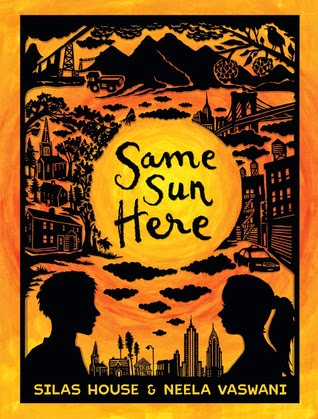How is your summer reading going? Have you read any great children's books? I just finished
A Snicker of Magic by Nathalie Lloyd, which I would recommend if you like quirky small-town Southern reads. Lloyd definitely has a way with words, and the book reminds me a lot of
Because of Winn-Dixie, though it doesn't quite hit it out of the ball park like
Winn-Dixie, which is one of my favorite books of all time (see below).
So for Part 2 of my Grown-up Guide to Children's books, I'm calling this the small town/ big city edition. For the big city portion, I've called in my more urbanite friends Susannah and Sugene for recommendations. Thanks, guys!
If you like books set in small towns:
 Hope Was Here by Joan Bauer.
Hope Was Here by Joan Bauer.
I have a total soft spot for Joan Bauer books. They're almost all about kids that are really passionate about a hobby or career and the way that brings love, hope, joy into their life. She won me over with the book
Squashed, which is about a young girl obsessed with growing a giant pumpkin. But since
Squashed may be a little harder to find,
Hope was Here is Bauer's Newbery Honor winning novel about a girl who moves with her aunt to small-town Wisconsin to take over a diner. There's a political campaign, a romance or two, and Hope's passion for being a great waitress. Lots of heart and hope in this one.
 Gone-Away Lake by Elizabeth Enright
Gone-Away Lake by Elizabeth Enright
This was my favorite book of last year, and it's the perfect book to read in the summer. I realized after reading it that it perfectly combined the things I like best in books: secret places, quirky old people, and old-fashioned stuff. Portia and her cousin Julian discover an abandoned lake-side community inhabited by an elderly brother and sister who share the story of the community at its heyday.
Because of Winn-Dixie by Kate Dicamillo
Kate Dicamillo is such an amazing writer, and she has the Newbery medals to prove it. Am I partial to this because it's the story of a preacher's kid and that's my story too? Maybe.Only Dicamillo can weave together a story about a community of lonely hurting people finding ways to love and forgive each other, layer it with spiritual depth and insight, and also make it a really funny story about a dog. This short book is filled with so many memorable characters: Gloria Dump, Otis, and the Preacher Man, and of course, Winn-Dixie.And who can forget the candies that are sweet and also taste of melancholy. If you like it, you must read her novel
Tale of Desperaux next.
Greetings from Nowhere by Barbara O'Connor
My friend Sugene recommended this and it's now on my to-read list. Aggie, the owner of the Sleepy Time Motel in the Great Smoky Mountains isn't expecting any guests, but when a series of families in need of a home and friends shows up, the hotel turns out to be just what they all need.
If you like books set in the big city:
Harriet the Spy by Louise Fitzhugh
Harriet is turning 50 this year, so she's in the news everywhere. Seems like the perfect time to reread a classic set in New York City. I remember this as my favorite book of third grade. Harriet is a spy and is constantly scribbling down her opinions about people in her notebook. When she loses her notebook, will she be able to repair her friendships?
Kiki Strike by Kirsten Miller
I haven't read this yet, but it was recommended by two of my friends. So if you like spies, intrigue, and adventure, this may be the book for you. Ananka Fishbein finds a sinkhole in the park across the street. When she explores, she finds a vast underground Shadow City beneath New York City and the new girl at school Kiki Strike. Kiki puts together a team of Girl Scout rejects to explore and map the Shadow city.
Wednesday Wars by Gary Schmidt
Set in the 1960s in Long Island, Holling Hoodhood is trying to survive his seventh grade year. Between pleasing his dad, dealing with bullies and being forced to read Shakespeare on Wednesdays with his English teacher while the rest of his class is at Catholic school, it's a tough year. This book has a Wonder Years quality to it, a little bit nostalgic, but also quite poignant and funny. Gary Schmidt can really write. His follow-up to this book
Okay for Now is also excellent, though kind of heart-breaking. In it, he follows the bully character Doug Swieteck as he moves to a new town and deals with his abusive father, his brother who has returned injured from Vietnam, and discovers friendship with his boss's daughter.
Any small town or big city books to add to this list?

























